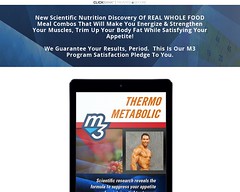Understanding the Role of Medical Supply Companies in the Healthcare Industry
Medical supply companies play an instrumental role in the healthcare industry, ensuring that health institutions, professionals, and patients have access to high quality, safe, and reliable medical products and supplies. They are the cornerstone upon which important healthcare aspects are built – from day-to-day medical procedures and tests to complex surgeries and treatments.
The impact of medical supply companies goes beyond the physical products they manufacture and distribute. They actively contribute to research and development initiatives, collaborating closely with healthcare providers and researchers to enhance medical technology and improve patient outcomes.
The Scope of Medical Supply Companies
Medical supply companies offer an extensive range of products, serving various healthcare specialties and needs. These include hospital equipment, diagnostic tools, surgical instruments, personal protective equipment, prosthetics, pharmaceuticals, and more. They cater to all healthcare sectors, such as hospitals, clinics, home care settings, labs, and pharmacies.
Each medical supply company usually specializes in specific product categories based on their expertise, resources, and market needs. They have stringent quality control protocols in place to ensure the efficacy and safety of their products, adhering to regulatory standards and guidelines.
The Vital Aspect of Fat Soluble Vitamin Analysis
Among various medical supplies these companies offer, one that stands out is the diagnostic tools and kits used for various medical and nutritional analysis. One such important analysis revolves around thefat soluble vitamin analysis.
Fat-soluble vitamins, namely vitamins A, D, E, and K, play essential roles in our bodies. They contribute to vital functions like bone health, immune response, blood clotting, and cell protection. However, excessive or inadequate levels can pose serious health issues. As such, balanced intake and proper monitoring of these vitamins are essential.
Thus, medical supply companies produce specialized diagnostic kits that help in thorough fat soluble vitamin analysis. These kits and analytical tools offer accurate results, ensuring healthcare providers can make the right intervention to treat vitamin deficiencies or overdoses timely and effectively.
The Importance of Medical Supply Companies in Public Health
Medical supply companies hold paramount importance in public health. By constantly innovating, they bring forward advanced medical solutions that help detect, manage, and treat various health conditions, contributing to improved population health.
Apart from providing tools for specific functions like fat soluble vitamin analysis, they contribute towards emergency preparedness by supplying necessary medical supplies and equipment during unexpected public health emergencies, like pandemics, accidents, and natural disasters. By doing so, they ensure that our health services can continue functioning and catering to patients’ needs even during crises.
In conclusion, medical supply companies, with their vast product range, innovative solutions, stringent quality controls, and commitment towards improving health outcomes, stand as an integral part of the healthcare industry. The vast scope of their offerings, including specific functions such as fat soluble vitamin analysis, testifies to the impactful role they play in enhancing where and how medical service is delivered worldwide.

